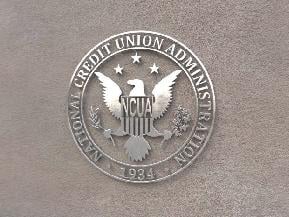MANHATTAN BEACH, Calif. – In August 2003, the $3 billion Kinecta FCU had a problem with its card program. An analysis of NCUA data revealed that while other CUs were seeing moderate to strong growth with their card portfolios, Kinecta’s had slid 22% during the period of March 2002 to March 2003. A 40,000 card portfolio which had been valued at $132 million in December 2001, had become a roughly 34,000 card portfolio valued at just above $93 million by March of 2003 – and there wasn’t any sign that the trend would necessarily change, although the CU had begun to aggressively look for ways to change it. “We don’t really dwell on what was wrong before,” said Bill O’Brien, senior vice president of lending when asked for some analysis. “Let’s just say we lifted out of being just one product among a whole mix of products and started having it report to me directly,” he said. O’Reilly and Andrea Brown, manager with Kinecta and Kathryn Davis, vice president of marketing for Kinecta agreed that the card program needed to be in the credit union structure in a way that it got the individual attention and evaluation that it needed and that the approach has made a difference – albeit through steady effort. In June of 2005 the 30,000 card portfolio was valued at $86 million, or about 2.81% of total assets compared to the $80 million it was worth in June 2004, according to NCUA, an increase of 7.5% over the course of year. In one way, Kinecta’s efforts to bring its card portfolio back to health differed from other credit unions. Whereas other credit unions with lagging card portfolios often need to expand their card offerings to help more members carry their cards, Kinecta retracted its card offerings a bit. It still supported all the types of cards that it had offered previously, but chose to emphasize and market the Classic and Visa Gold versions, in both a standard and share secured model, as well as a platinum Visa program and to de-emphasize the others. Doing this allowed Kinecta to streamline and more clearly promote its card message, explained Davis, and to focus their effort on promotions which would both introduce more members to the credit union’s cards and help existing cardholders move the Kinecta card to top of wallet. The most successful promotion for bringing new cardholders on board was a 4.9% APR Balance Transfer promotion that ran from January through April of 2005 and which offered the members the chance to keep those balances at 4.9% for the life of the balance, compared with other card offers which limited their time span to a set period of time. The second thing Kinecta did to help drive card usage was to put a rewards program, Dreammiles by Consumer Benefit Services, onto their cards at the accumulation rate of one point for every dollar charged to a Kinecta card. This program doesn’t need the cardholder to enroll in it and offers both travel related as well as merchandise rewards, Davis said. But the biggest thing that the Kinecta staff said needed to be done to keep the card program profitable was to keep on it all time. “Every month, we have some quality promotion working,” Davis said. “Some have worked a little better than others, but they have all been solid and they have all helped keep our card usage higher than it had been before,” she said. Currently, for example, the credit union is offering the 4.9% balance transfer promotion, a promotion that will run into 2006, as well as a chance to win a trip to Milan, Italy, during the winter games in 2006, a promotion that will end at the end of 2005. With a card penetration of just about 15% and at 2.81% of assets, Davis and the others acknowledged that the credit union still has room to keep growing its portfolio and said that it has set interior benchmarks to encourage that growth. “I expect that we will see 10% growth in 2006,” O’Brian said. “That is what we are going to shoot for.” [email protected]




 Copyright © 2024 ALM Global, LLC. All Rights Reserved.
Copyright © 2024 ALM Global, LLC. All Rights Reserved.










